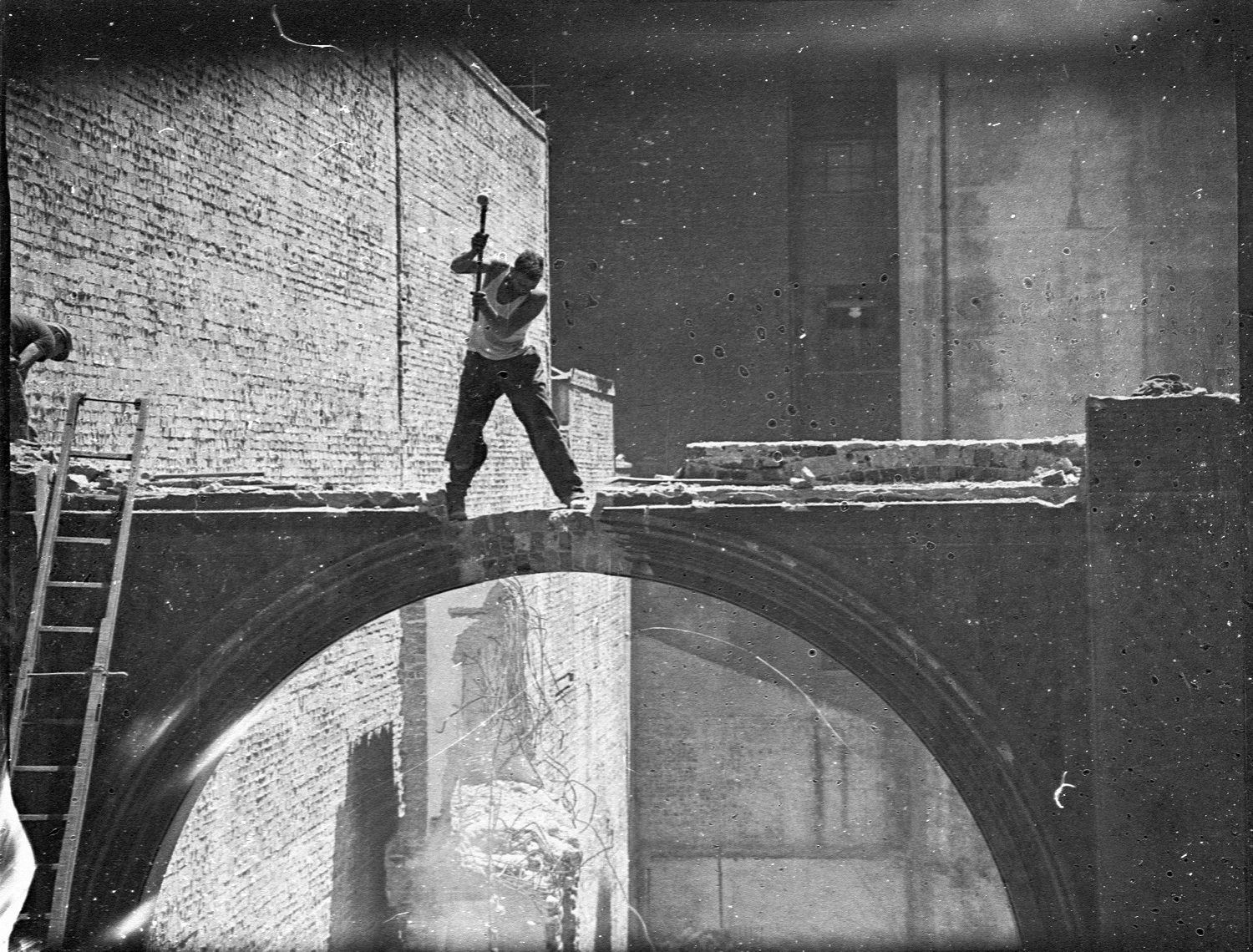-

Demolishing Hoffnung’s building, Pitt Street, Sydney, Ernie Bowen, 1939. State Library of NSW: hood_19948.
Architecture can speak of a city’s history and story, of what it was and has become, and of the people that have lived, worked and existed among them. ‘Demolished Sydney’, an exhibition currently showing at the Museum of Sydney, pays tribute to some of the city’s lost buildings and explores what made them some of the most significant demolitions of the past 200 years in Sydney.
‘Demolished Sydney’ offers an insight into how the city’s urban landscape has evolved since its establishment in 1788 and how its unique mix of Georgian, Victorian, Art Deco, Industrial and Modernist architecture was created.
Among the demolished buildings featured in the exhibition are the Commissariat buildings, which were once the two oldest government buildings in New South Wales. Despite the Royal Australian Historical Society calling for them to be saved, the buildings, which were built in 1809 and 1812, were torn down in 1939 as part of a plan to ‘beautify’ Circular Quay. Today, the site is home to the Museum of Contemporary Art (MCA). Built in 1936, the striking Rural Bank, an Art Deco-style building that once formed part of Martin Place, was torn down in 1982, despite protests by several thousand locals to save it.

State Office Block, c1967. City of Sydney Archives 026544.
Other sites to face demolition despite public outcry to protect them include the tiny artisan shops of Rowe Street in the CBD, whose history traced back to 1875, but were removed in 1972; and the grand, 1928-built Regent Theatre, a popular movie theatre on George Street that entertained thousands of Sydneysiders in the pre-TV era of the 1930s and ‘40s, which was demolished in 1989.
Dr. Nicola Teffer, an art historian and curator who specialises in 19th-century Australian social history and photography, and curator of ‘Demolished Sydney’, says of the exhibition: “As our urban environment changes, so too has our idea of heritage and our understanding of what should be preserved for the future. The ways in which we navigate the tension between the dynamism of urban change and the need to protect the past will continue to be a complex but fascinating process which will evolve as our city journeys into its future.”

Rowe Street, photographer unknown, 1929. City of Sydney Archives: 037/037868.
The exhibition comes at a time when parts of the Sydney community are campaigning hard to save the Sirius Building in The Rocks. (The Save our Sirius campaign has many supporters, including City of Sydney Lord Mayor Clover Moore). Designed in the late-70s by architect Tao Gofers, the Brutalist-style public housing complex, defined by its raw concrete exterior and stacked box style, its grey exterior dotted with coloured exhaust vents, is a well-known Sydney landmark.
With views of the Opera House and Circular Quay, the Sirius Building occupies an enviable location. One that in 2014 was earmarked for sale by the NSW Government, with residents being forced to relocate in 2015, and the building – despite calls from the Heritage Council to list it on the State Heritage Register and subsequently protect it – likely to be demolished in the near future.

Statue of Her Majesty the Queen in the Garden Palace, c19879, Richards & Co. (Sydney, NSW). National Library of Australia.
In the march towards ‘progress’, one can only hope that important Sydney heritage buildings, like Sirius, are protected from demolition and preserved for future generations.
Demolished Sydney is on at the Museum of Sydney from 19 November 2016 until 17 April 2017.
Sources:
https://www.nationaltrust.org.au/initiatives/sirius-building/
http://millerspointcommunity.com.au/wp-content/uploads/2016/04/Letter-from-LM-to-Minister-Speakman-Sirius-Building.pdf
http://millerspointcommunity.com.au/the-place/sirius/